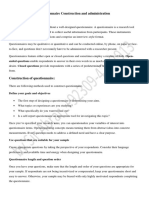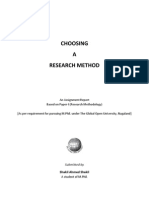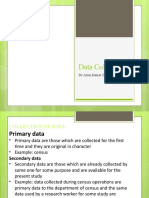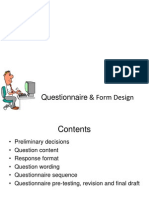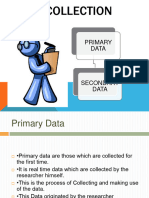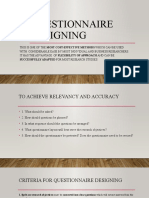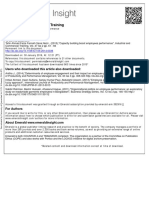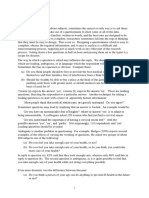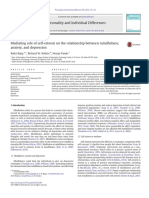0% found this document useful (0 votes)
14 views76 pagesCollecting Data With Questionnaires 11
This document outlines the importance of the scientific method in research, detailing its key steps and applications, particularly in formulating hypotheses and designing experiments. It emphasizes the use of questionnaires as a data collection method, discussing their types, advantages, disadvantages, and design considerations. The document also highlights best practices for questionnaire design, including question types and common pitfalls to avoid.
Uploaded by
Mugabe Mugz EdwinCopyright
© © All Rights Reserved
We take content rights seriously. If you suspect this is your content, claim it here.
Available Formats
Download as PDF, TXT or read online on Scribd
0% found this document useful (0 votes)
14 views76 pagesCollecting Data With Questionnaires 11
This document outlines the importance of the scientific method in research, detailing its key steps and applications, particularly in formulating hypotheses and designing experiments. It emphasizes the use of questionnaires as a data collection method, discussing their types, advantages, disadvantages, and design considerations. The document also highlights best practices for questionnaire design, including question types and common pitfalls to avoid.
Uploaded by
Mugabe Mugz EdwinCopyright
© © All Rights Reserved
We take content rights seriously. If you suspect this is your content, claim it here.
Available Formats
Download as PDF, TXT or read online on Scribd
/ 76

